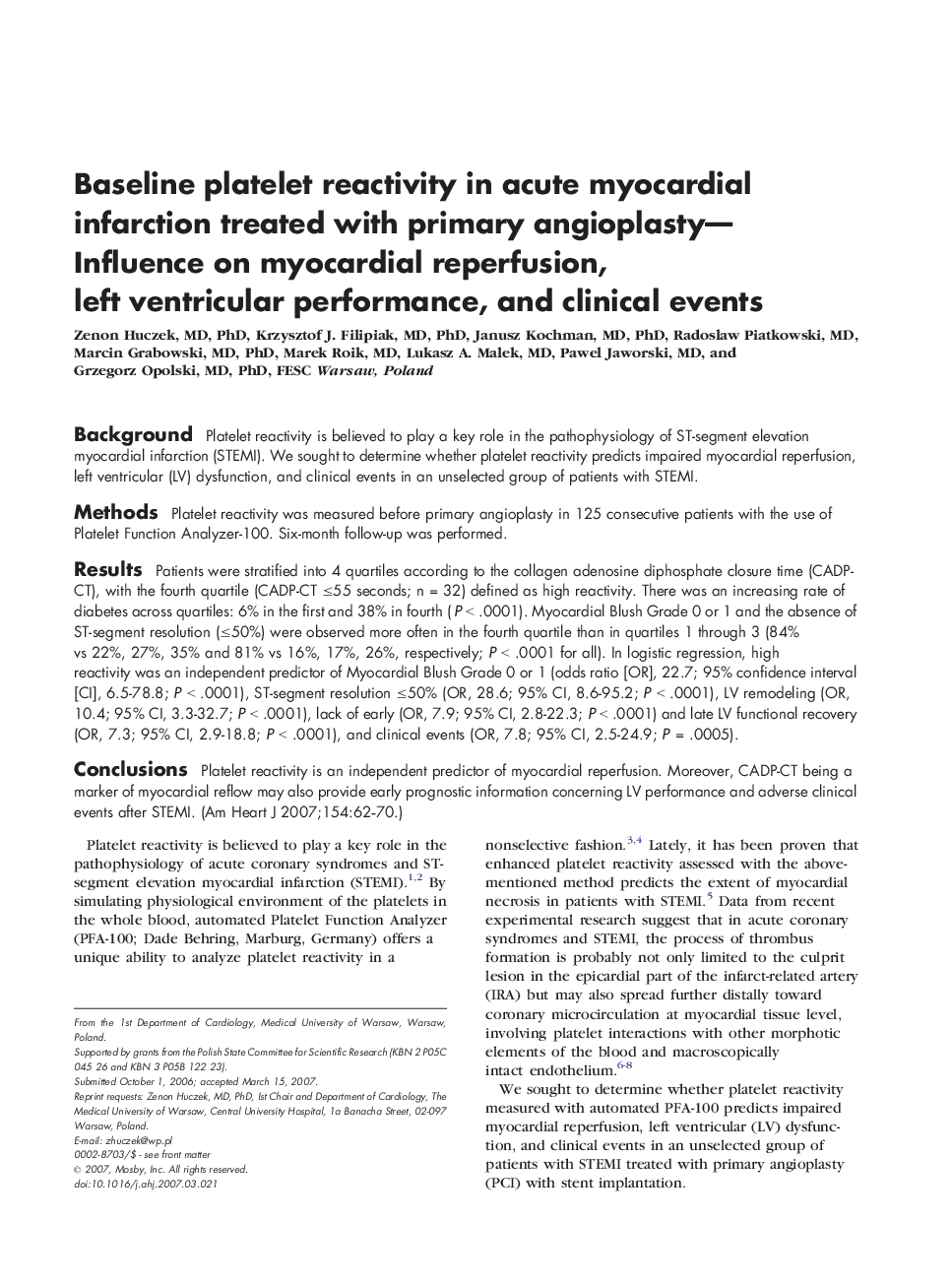| کد مقاله | کد نشریه | سال انتشار | مقاله انگلیسی | نسخه تمام متن |
|---|---|---|---|---|
| 2849141 | 1167673 | 2007 | 9 صفحه PDF | دانلود رایگان |

BackgroundPlatelet reactivity is believed to play a key role in the pathophysiology of ST-segment elevation myocardial infarction (STEMI). We sought to determine whether platelet reactivity predicts impaired myocardial reperfusion, left ventricular (LV) dysfunction, and clinical events in an unselected group of patients with STEMI.MethodsPlatelet reactivity was measured before primary angioplasty in 125 consecutive patients with the use of Platelet Function Analyzer-100. Six-month follow-up was performed.ResultsPatients were stratified into 4 quartiles according to the collagen adenosine diphosphate closure time (CADP-CT), with the fourth quartile (CADP-CT ≤55 seconds; n = 32) defined as high reactivity. There was an increasing rate of diabetes across quartiles: 6% in the first and 38% in fourth (P < .0001). Myocardial Blush Grade 0 or 1 and the absence of ST-segment resolution (≤50%) were observed more often in the fourth quartile than in quartiles 1 through 3 (84% vs 22%, 27%, 35% and 81% vs 16%, 17%, 26%, respectively; P < .0001 for all). In logistic regression, high reactivity was an independent predictor of Myocardial Blush Grade 0 or 1 (odds ratio [OR], 22.7; 95% confidence interval [CI], 6.5-78.8; P < .0001), ST-segment resolution ≤50% (OR, 28.6; 95% CI, 8.6-95.2; P < .0001), LV remodeling (OR, 10.4; 95% CI, 3.3-32.7; P < .0001), lack of early (OR, 7.9; 95% CI, 2.8-22.3; P < .0001) and late LV functional recovery (OR, 7.3; 95% CI, 2.9-18.8; P < .0001), and clinical events (OR, 7.8; 95% CI, 2.5-24.9; P = .0005).ConclusionsPlatelet reactivity is an independent predictor of myocardial reperfusion. Moreover, CADP-CT being a marker of myocardial reflow may also provide early prognostic information concerning LV performance and adverse clinical events after STEMI.
Journal: American Heart Journal - Volume 154, Issue 1, July 2007, Pages 62–70